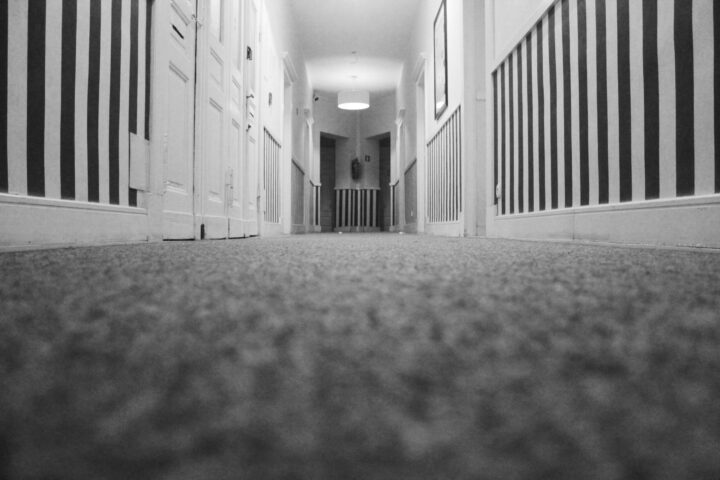The following contribution is from another author.
Commercial carpet tiles can transform a space, combining practicality with style. However, choosing the right ones isn’t always straightforward. It’s easy to overlook certain details or make decisions based on limited information, which can lead to headaches down the track. Want to ensure your investment is the right one?
Overlooking Durability
One of the most common errors is underestimating how much wear and tear commercial carpet tiles will face. Think about it—commercial spaces typically have heavy foot traffic. From customers to employees, these tiles take a beating daily. Choosing tiles without considering durability can result in them looking worn and frayed much sooner than expected. Always check the material’s wear rating and ensure the carpet tiles are designed to handle the activity levels of your space. If you’re dealing with high-traffic areas, look for options specifically engineered for this purpose.
Ignoring Maintenance Requirements
Carpet tiles aren’t all created equal when it comes to cleaning and maintenance. Some are more stain-resistant than others, and the ease of upkeep can vary dramatically between materials. For instance, tiles with loop pile construction tend to trap dirt, while others, like low-profile tiles, can be much easier to clean. Have you thought about how often you’ll need to clean them? Will you need special cleaning solutions? Considering these questions ahead of time can save you from extra costs and hassle.
Forgetting About Design Cohesion
A stunning carpet tile on its own doesn’t guarantee it’ll look great in your space. A common mistake is choosing tiles based solely on their individual appearance without considering how they’ll fit into the overall design. Do they complement the walls, furniture, and lighting? Do they align with your brand’s identity? A mismatch in style can make the space feel disjointed. Remember, the right carpet tiles should enhance the aesthetic and function of the area.
Prioritising Price Over Quality
Let’s talk about budgets. It’s tempting to focus on the lowest price, but prioritising cost over quality can backfire. Cheaper carpet tiles might save you money initially, but they could wear out faster, fade, or even delaminate, leading to costly replacements. Think of carpet tiles as an investment. High-quality options may have a higher upfront cost but often last longer and maintain their appearance better, making them more cost-effective in the long run.
Skipping Acoustic Considerations
Did you know that carpet tiles play a big role in controlling noise? Many people forget to factor this into their decision-making process. In commercial spaces, especially offices or open-plan layouts, noise reduction is crucial for productivity and comfort. Tiles with a thicker backing or denser fibres can help absorb sound and minimise echoes. Overlooking this can lead to a noisy environment, which might not seem like a big deal initially but can quickly become an issue.
Not Factoring in Flexibility
One of the biggest advantages of carpet tiles is their modularity, but not all options are equally flexible. Some tiles are designed to be easily replaced if they’re damaged or stained, while others might not be as simple to swap out. If flexibility is a priority, look for tiles with consistent dye lots and simple installation systems. This way, you can replace individual tiles without worrying about mismatched colours or patterns.
Choosing the Wrong Type of Backing
The backing of your carpet tiles is just as important as the surface. It affects the tile’s stability, moisture resistance, and longevity. For example, in areas prone to spills or humidity, a backing with moisture-proof properties is essential. Ignoring this aspect can lead to issues like mould growth or tile lifting. Always match the backing to the specific needs of your space.
Forgetting to Plan for Extra Tiles
It’s easy to calculate the exact square metreage of your space and order only what’s needed, but this approach can cause problems. Why? You’ll likely need extra tiles for cuts, replacements, and future repairs. Without extras, you risk not being able to find matching tiles later if one gets damaged. A good rule of thumb is to order an additional 10–15% to account for these scenarios.
Not Testing Before Committing
Choosing carpet tiles without testing them in the actual space can lead to surprises. Colours often look different under various lighting conditions, and what seems perfect in a showroom might clash in your environment. Always request samples and see how they look in your space before placing a full order. It’s a simple step but one that can prevent costly mistakes.
Overcomplicating Installation
Some people assume all carpet tiles are simple to install and go with a DIY approach. While many options are designed to be user-friendly, improper installation can lead to issues like uneven surfaces or tiles coming loose. If you’re not confident in your ability to install them correctly, hiring professionals can ensure the job is done right the first time.
Missing the Environmental Impact
Sustainability is an increasingly important consideration, but it’s often overlooked. Many carpet tiles are made with recycled materials or are recyclable themselves, making them a more eco-friendly choice. Take a moment to check whether the options you’re considering align with your sustainability goals. It’s a small decision that can have a big impact.
Wrapping It Up with Confidence
Choosing commercial carpet tiles doesn’t have to be overwhelming if you know what to avoid. By considering factors like durability, maintenance, design, and flexibility, you can make a decision that suits both your needs and your space. Take your time, ask the right questions, and don’t shy away from seeking expert advice. With the right approach, you’ll find carpet tiles that look great, perform well, and last for years to come.
















